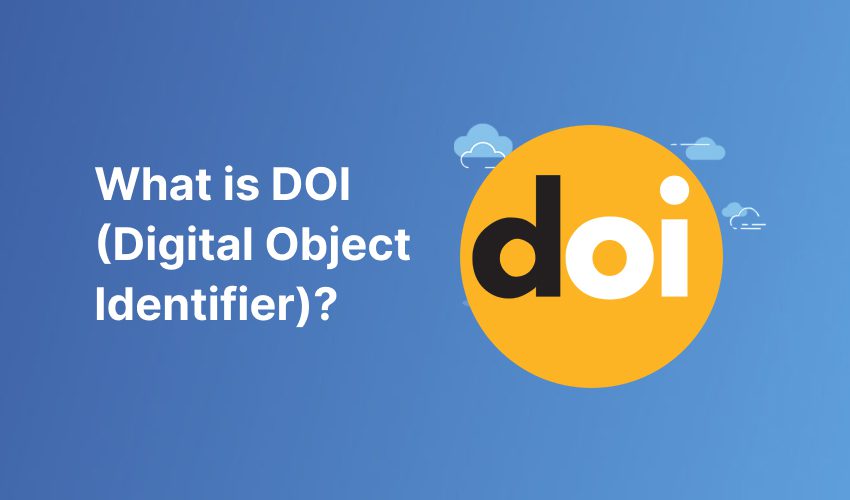
A Digital Object Identifier (DOI) is a unique alphanumeric string assigned to digital content such as journal articles, research papers, books, datasets, and reports. It provides a permanent and reliable link to access digital resources, ensuring that they can be easily located even if their URLs change over time.
DOIs are standardized by the International DOI Foundation (IDF) and follow the ISO 26324 standard. They are widely used in academic publishing, research repositories, and digital libraries to ensure persistent access to scholarly content.
Structure of a DOI
A DOI consists of two main parts:
- Prefix: Assigned by a DOI registration agency (e.g., CrossRef or DataCite). It typically starts with “10.” followed by a unique identifier for the organization.
- Suffix: Determined by the publisher or organization managing the digital object. It uniquely identifies the specific resource.
For example:
DOI: 10.1000/xyz123Here, 10.1000 is the prefix, and xyz123 is the suffix, together forming a persistent identifier.
How DOIs Work
DOIs are registered with metadata that includes essential details like the title, author(s), publication date, and source URL. When users enter a DOI in a resolver service like https://doi.org/, they are redirected to the current location of the document, ensuring permanent access even if the URL has changed.
Benefits of Using DOIs
1. Permanent and Reliable Linking
Unlike standard URLs that may break over time, DOIs remain stable, ensuring continuous access to digital content.
2. Easy Citation and Academic Credibility
DOIs simplify referencing by providing a unique identifier that is widely recognized in scholarly communication. Many citation styles, including APA, MLA, and Bluebook, require DOIs for referencing digital sources.
3. Improved Discoverability and Indexing
Academic search engines, databases, and repositories prioritize DOI-assigned content, making it easier to locate research papers and datasets.
4. Tracking and Metrics
DOIs enable tracking of citation counts, downloads, and usage statistics, helping authors and researchers assess the impact of their work.
5. Standardization and Global Recognition
As an internationally accepted standard, DOIs provide consistency in digital object identification across different platforms and disciplines.
Where DOIs Are Used
- Academic Journals: Most scholarly articles published in reputable journals have DOIs.
- Research Repositories: Platforms like arXiv, SSRN, and Zenodo use DOIs for research papers.
- Books and Book Chapters: Many digital books and individual chapters have assigned DOIs.
- Datasets: Research datasets in repositories like Dryad and Figshare are often assigned DOIs.
- Theses and Dissertations: Some universities and institutions assign DOIs to doctoral theses and research projects.
How to Find a DOI
- For journal articles, the DOI is often listed on the first page or in the citation information.
- You can search for DOIs using databases like CrossRef (https://www.crossref.org/).
- If you have a reference but not the DOI, you can use the DOI Lookup tool (https://www.doi.org/).
Conclusion
Digital Object Identifiers (DOIs) play a crucial role in ensuring the permanence, accessibility, and credibility of digital content. They are essential for academic research, scholarly communication, and digital asset management. By using DOIs, researchers, publishers, and institutions can facilitate better citation practices, improve resource discoverability, and ensure long-term access to valuable digital materials.
For more information on DOIs, visit https://www.doi.org/ or check with your institution’s library or research department.
